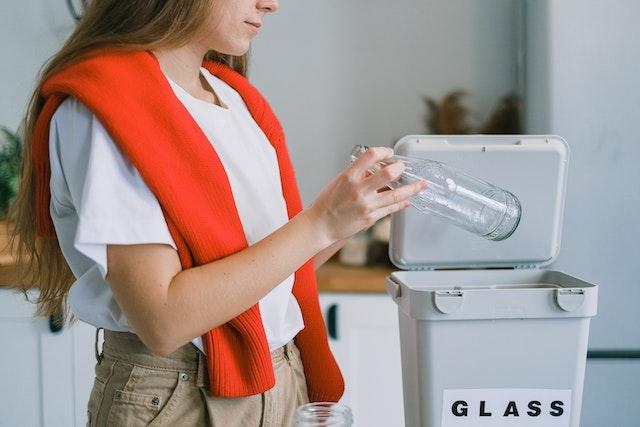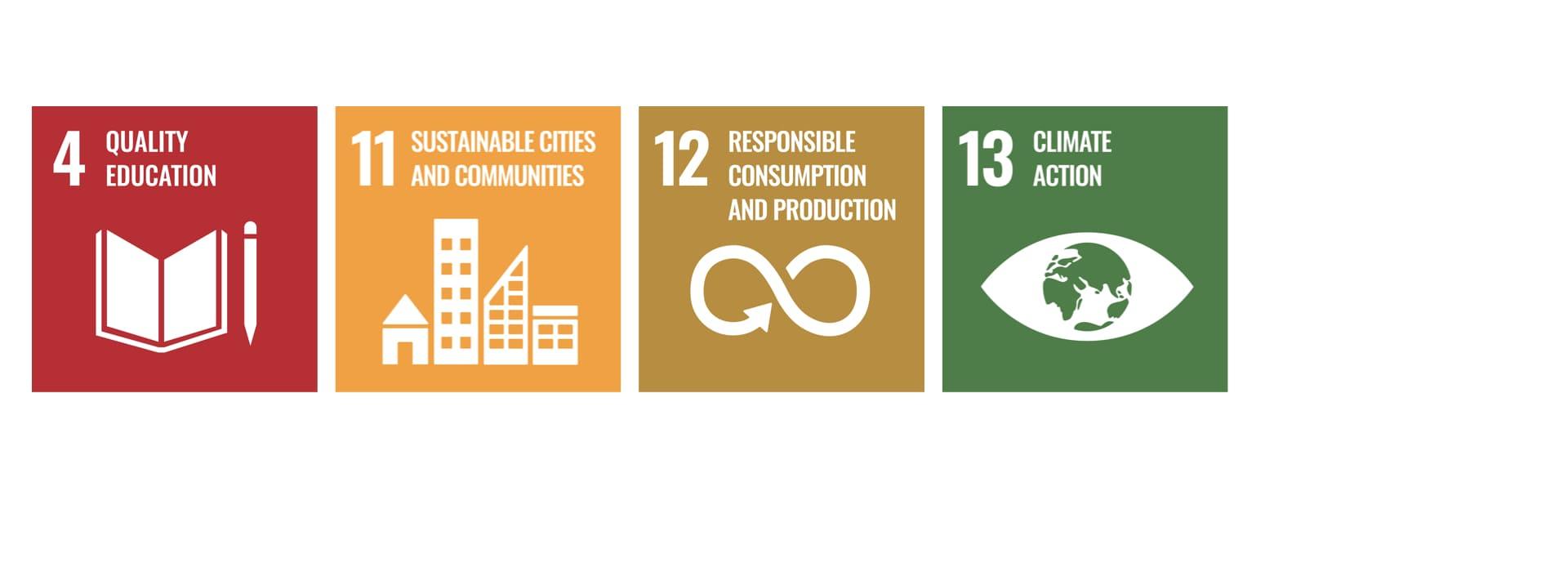Sustainable consumer behavior: Why is it so hard? How can it get easier?
22 Septiembre - 2022
Roger Pagà
Lecturer at the UPF-BSM Business & Management Strategy Department
Researcher at the Mercadona Chair in Circular Economy
__
In an attempt to build a more environmentally-sustainable society, the European Commission is pushing for the 'circular economy': an alternative production and consumption economic model based on the concepts of reducing, reusing, and recycling. Under the circular economy, products would ideally be created from the ground-up to be easily recycled or remanufactured, and the waste of one company would be cleverly used as another company's resource.
While it is clear that companies need to undergo a big transformation to become more circular, the circular economy model cannot succeed with the involvement of companies alone; consumers need to get involved too. Consumers can participate in the circular economy by engaging in sustainable consumer behaviors such as household recycling, the reduction of energy consumption, or the purchase of recycled and remanufactured products. However, engaging in such sustainable behaviors is not necessarily easy for consumers. In this article, we will explore two barriers to sustainable behavior as well as some solutions to overcome such barriers.
Consumers can participate in the circular economy by engaging in sustainable behaviors such as household recycling or the reduction of energy consumption. However, that is not necessarily easy
Barrier #1: How the human mind works
Imagine that you are saving money because you want to go on vacation next month. Further, imagine that today, on your way home, you notice a nice, expensive-looking shirt on the display window of a certain clothing store. You like that shirt immediately, and you want to buy it, but then you remember that you shouldn't because you are saving money for your vacation. In psychology, this is known as an intertemporal conflict: a situation where a present action (buying the shirt) conflicts with a future action (the vacation you are saving money for). When faced with such intertemporal conflicts, what do humans tend to do? By default, they prioritize the present (buying the shirt). Prioritizing the future is harder because that involves accepting a cost right now (giving up on the shirt).
The human bias towards the present helps us understand why falling into temptation is easy, and why engaging in sustainable behaviors is hard. Sustainable behaviors such as recycling or reducing energy consumption are, in fact, intertemporal conflicts: there is a benefit to engaging in such behaviors (a healthier planet), but that benefit is not something the consumer will notice immediately. Rather, it's something that will be most easily noticed in the future. However, the costs of engaging in such behaviors can be felt immediately: a consumer who chooses to start recycling today will immediately have to deal with costs in terms of effort (learning about household waste types, containers types, etc.), time (sorting and throwing out the trash is now more time-consuming), and space (more space is needed in the kitchen to accommodate a larger number of trash bins).
Prioritizing the future is harder because that involves accepting a cost right now. The human bias towards the present helps us understand why falling into temptation is easy and engaging in sustainable behaviors is hard
Because engaging in sustainable behaviors involve future benefits but present costs, and because the human mind prioritizes the present, sustainable behaviors are by default perceived as sacrifices. That's the first reason why consumers have a relatively hard time becoming more sustainable.
The solution to this first barrier is easy on paper: any action that can reduce the present costs of sustainable behaviors, or add present benefits to sustainable behaviors, will increase the chances that consumers engage in such behaviors. Let's examine some examples:
- Leveraging the consumer's social identity. A consumer's social identity is defined by the social groups the consumer is part of: family, friends and coworkers, political party, or even the influencers that the consumer is a fan of. The beliefs, attitudes, and behaviors of the consumer will be influenced by those of the consumer's social groups. Therefore, if the consumer's political party is very committed to recycling, it is more likely that the consumer starts recycling. If an influencer the consumer is a fan of has recently been buying remanufactured products, it is more likely that the consumer starts doing so. In this situation, engaging in sustainable behaviors has a new, and present benefit for the consumer: it allows the consumer to feel more strongly connected to the social groups that shape the consumer's social identity. Or, alternatively, it can be perceived in the opposite way: not engaging in the sustainable behavior has a new, and present cost for the consumer: it weakens the consumer's connection to the social groups that shape the consumer's social identity.
- Appealing to the consumer's need for status. The search for status has always been a central motivation of human behavior. Therefore, consumers would be more likely to engage in sustainable behaviors if they can derive social status from them. Sustainable behaviors can potentially be used to obtain status if they are more expensive than similar non-sustainable behaviors, or if, by engaging in such behaviors, consumers can showcase to others how virtuous or morally good they are. It is important to keep in mind that, as researched has shown, sustainable behaviors can only work as status-boosters if they are visible to others; buying an eco-friendly electrical appliance, for example, would not work well because others will not see you use it. However, buying an eco-friendly car would work. Summarizing, consumers would be more likely to engage in sustainable behaviors if they can derive status from doing so, but that requires the sustainable behavior to be publicly observable, or at least verifiable.
- Using social feedback to appeal to the consumer's competitiveness and need for validation. In one study, informing consumers that their energy consumption was above the neighborhood's average turned out to be an effective way to encourage those consumers to reduce their energy consumption. On the other hand, informing consumers that their energy consumption was below the neighborhood's average had multiple, conflicting effects: by default, it encouraged consumers to increase their energy consumption (a licensing effect: it is okay for us to consume more since we have been too frugal). However, when the information was accompanied by a sign of social approval (a smiling face), those consumers kept their energy consumption as low as it was originally (a validation effect). Once again, this is an example of adding a present cost or benefit to a sustainable behavior: social feedback reporting that the consumer is underperforming compared to others (a cost to not behaving sustainably), or social feedback reporting that the consumer is outperforming others (a benefit to behaving sustainably).
Barrier #2: Consumer's perception of certain sustainable products
As mentioned earlier, one way in which consumers can be more sustainable is by purchasing sustainable products: recycled products, remanufactured products, etc. However, this can be difficult for at least two reasons:
- Research suggests that consumers believe remanufactured products to be inferior quality compared to brand-new products, even though their quality should be by definition identical. Similarly, research suggests that even though bio-based products are made from clean plastics, consumers still perceive them as being "used" or "dirty". Because consumers perceive the quality of those products to be low, this triggers a chain reaction that ultimately decreases purchase intentions: because the quality is low, the risk of buying those products is high. Because of the risk of buying those products is high, the products are regarded as uncertain, low-value options. Because the products are regarded as uncertain, low-value options, purchase intentions end up being low. Again, it is important to keep in mind that all this stems from a misperception of the products' true quality, which is underestimated.
- Research suggests that sustainable products are associated with gentleness. For certain products that are supposed to be gentle, such as baby shampoo, a sustainable variant will likely be very welcome because there is a match between the product (baby shampoo is supposed to be gentle) and the fact that it is sustainable (sustainable products are gentle). However, for products that are supposed to be strong (e.g. car tires), a sustainable variant can actually backfire because it would result in a mismatch between the product (car tires are supposed to be strong) and the fact that it is sustainable (sustainable products are gentle). Therefore, being sustainable can be a liability for some products, precisely because of those perceptions that equate sustainability with gentleness.
The gap between perceived quality and real quality of some sustainable products is caused by the information asymmetry between consumers and manufacturers. Because consumers do not know enough, they make assumptions that ultimately put a damper on the products' commercial success.
The solution to the second barrier is also simple on paper: consumer education. According to research, the gap between perceived quality and real quality of some sustainable products is caused by the information asymmetry between consumers and manufacturers. Because consumers do not know enough about how those products are made, they make assumptions that ultimately put a damper on the products' commercial success. The association between sustainable products and gentleness is a more delicate matter because it can benefit some products but hinder others. Once again, though, consumers need to be taught that just because sustainable products are gentle with the environment, that does not automatically mean that such products are brittle, fragile, or weak.

